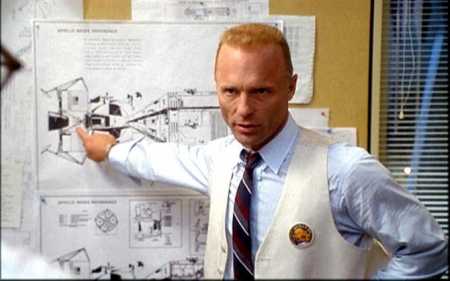There’s this great scene in the Ron Howard film Apollo 13 when Mission Control, realising that the fate of the astronauts rests on the ground crew’s ability to improvise a brand new mission on the fly, search for unorthodox uses of whatever resources the astronauts have left.
I love the moment when Flight Director Gene Krantz (played by Ed Harris) declares:
“I don’t care what anything was designed to do, only what it CAN do!”
It’s a great line because it neatly captures one of the classic techniques of inventors and innovators: to think past the traditional and accepted function of a thing to explore its full potential, usually as something it wasn’t supposed to be.
Young Thomas Edison was working as a telegraph operator at Western Union, a job that required him to translate clicks and taps into words, something he struggled to do as he was almost completely deaf. So being the creative type, Edison built an amplifying device to solve the problem and was immediately fired for inventing on company time. Being unemployed simply gave him more time to tinker with the machine which quickly became the Edison Phonograph.
The world didn’t want his hearing device but it went crazy for his music machine.
Noah McViker’s Wallpaper Cleaning Compound wasn’t a big hit until it found its way into the hands of kindergarten kids under a new name: Playdoh. Allan Holloway’s sealant putty didn’t really take off until it became BluTac and Listerine struggled as a floor cleaner and then a footwash before anyone thought to gargle with the stuff. The facial tissues we blow our noses on began life as WWI gas mask filters and Viagra was supposed to be a treatment for angina until the male patients participating in the clinical study experienced an unforeseen side effect.
The neurotoxin produced by the bacterium Clostridium botulinum is the most toxic substance known to science, the cause of the dreaded botulism. Yet millions of people regularly inject this poison into their faces in the form of Botox, a chemical now widely used in the treatment of migraine, severe muscle spasm and even some forms of palsy and paralysis.
Even the world’s most hated chemical, Thalidomide is sneaking back into medicine, as it offers great hope to people suffering from myeloma (cancer of blood plasma cells).
See what happens when you look past what it’s supposed to be and start to wonder what it could be?
Many of the world’s greatest inventions, including the steam engine, the microscope, the telescope, the rocket and EVEN THE WHEEL were originally toys… until the grown-ups started to play with them.
And here’s a thought: the history of innovation teaches us that breakthrough ideas often come from people with no relevant expertise or qualifications – a sculptor invented the biro, a vet created the pneumatic tyre, a journalist gave us the parking meter (thanks a heap) and the airplane was invented by two bicycle mechanics named Wilbur and Orville.
Think you know what something (or someone) does? Look past the function and discover the potential.

There are No Responses to this post. Jump In!